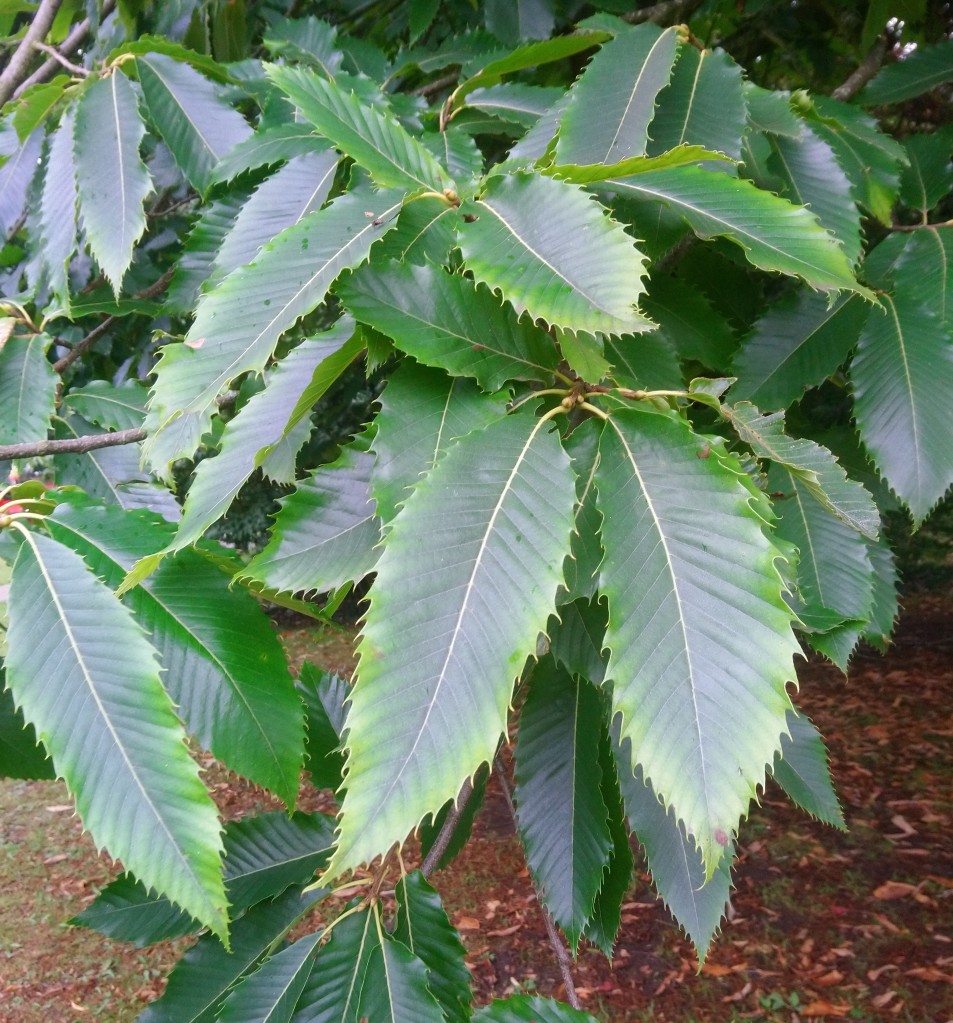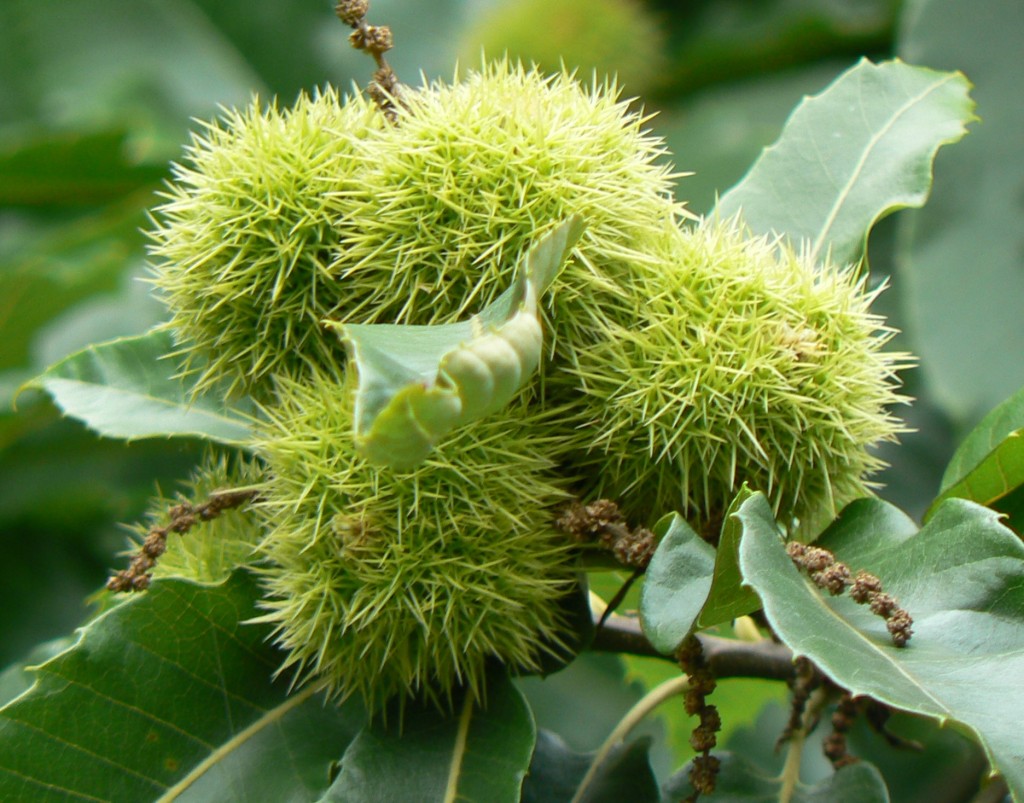
[069] Castanea sativa, Chestnut
Introduction
Castanea sativa, the Sweet Chestnut or just Chestnut, is a widespread European tree, widely cultivated for its seeds, which are used in cookery.
There are Castanea species found in America and Asia but Castanea sativa is the only European species. It is sometimes called the Spanish Chestnut, especially outside Europe.
It should not be confused with the unrelated [008] Horse Chestnut, or with two other unrelated types of Water Chestnut used in Chinese cookery.
Taxonomy
Kingdom – Plants
Division – Vascular Plants
Class – Angiosperms (Flowering Plants)
Order – Fagales
Family – Fagaceae (Beeches, Oaks and many other trees)
Subfamily – Quercoideae (Oaks, Chestnuts and others)
Genus – Castanea (Chestnuts)
Scientific Name – Castanea sativa
Name
The word chestnut comes via Old English and Old French from the Latin castanea, which in turn come from the Ancient Greek name of the tree.
Sativa, from Latin means sown or planted i.e. cultivated.
Description
It is easiest to describe the Chestnut is by comparing it with something very distantly related. There are well over a thousand species of trees in the order Fagales, but the obvious comparison is the Horse Chestnut, from the order Rosales.
The leaves of the Chestnut are fairly similar to the Horse Chestnut. Both are palmate and of similar size but the leaves of the Chestnut are narrower, more spear-like, darker in colour and clearly serrated.



The seed cases are also similar to the Horse Chestnut, but even spikier,



Even the nuts inside look similar but the Horse Chestnut’s conkers are poisonous!
Habitat and use
The Sweet Chestnut is native to a relatively small area of Southern Europe and the Black Sea, but has been cultivated for about four thousand years and has spread and naturalised.
It is cultivated as an ornamental tree throughout Britain.
The tree was used initially for its timber and in making charcoal. It is now cultivated throughout Europe either for timber of for its fruits.
The nuts, similar in appearance to the conkers of a Horse Chestnut, are often eaten after roasting. They are also used in cookery and in some places, such as Corsica, ground chestnuts are used instead of flour.
Other Notes
I don’t think of the Chestnut as British because we don’t farm them here. I have just noticed a few in parks and gardens and streets as ornamental trees. The most surprising thing nowadays is to see a tree with something like conkers but without the devastating effects of the Horse Chestnut Leaf-miner.

See also
There are several more trees to come but you know by now that the most similar looking one, the Horse Chestnut, has already been seen.

Pingback: [188] Judolia cerambyciformis or Pachytodes cerambyciformis | The Species of Britain
Pingback: [189] Juglans species, Walnuts | The Species of Britain